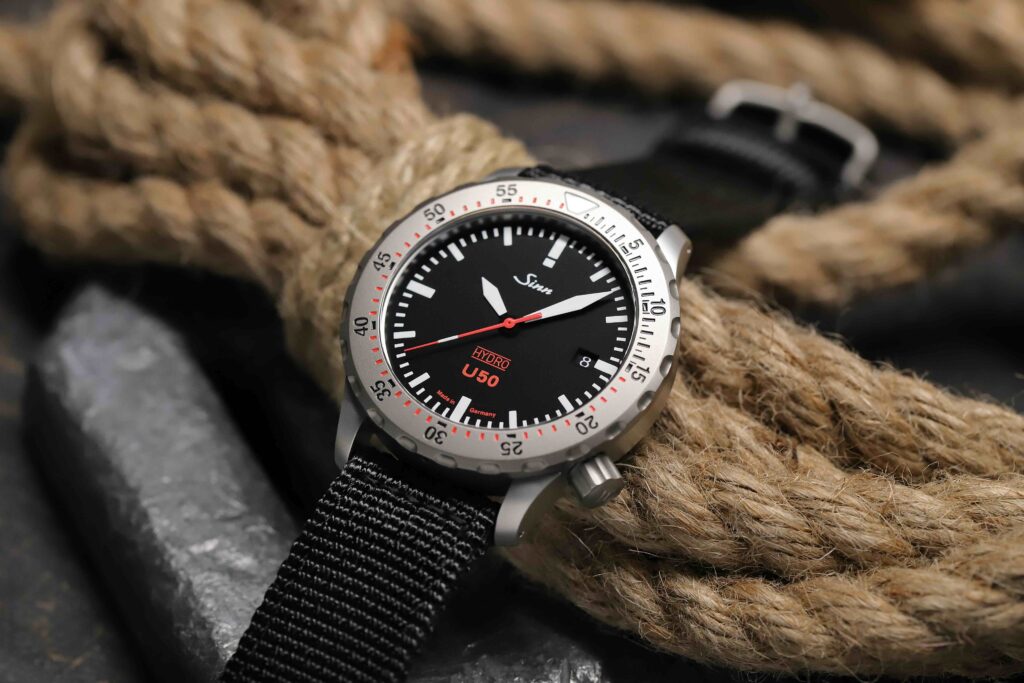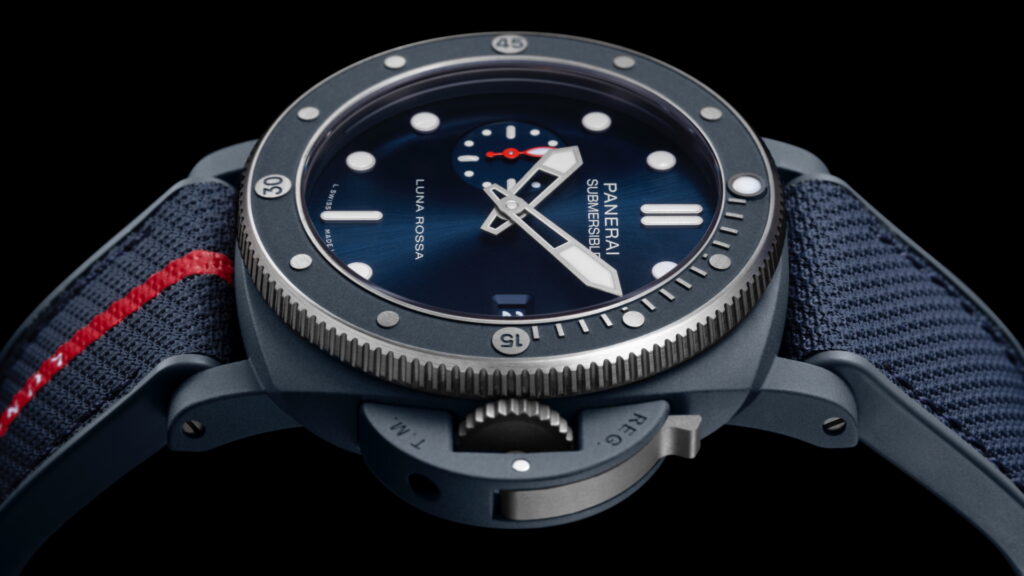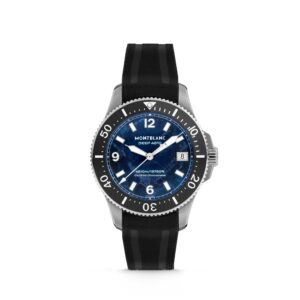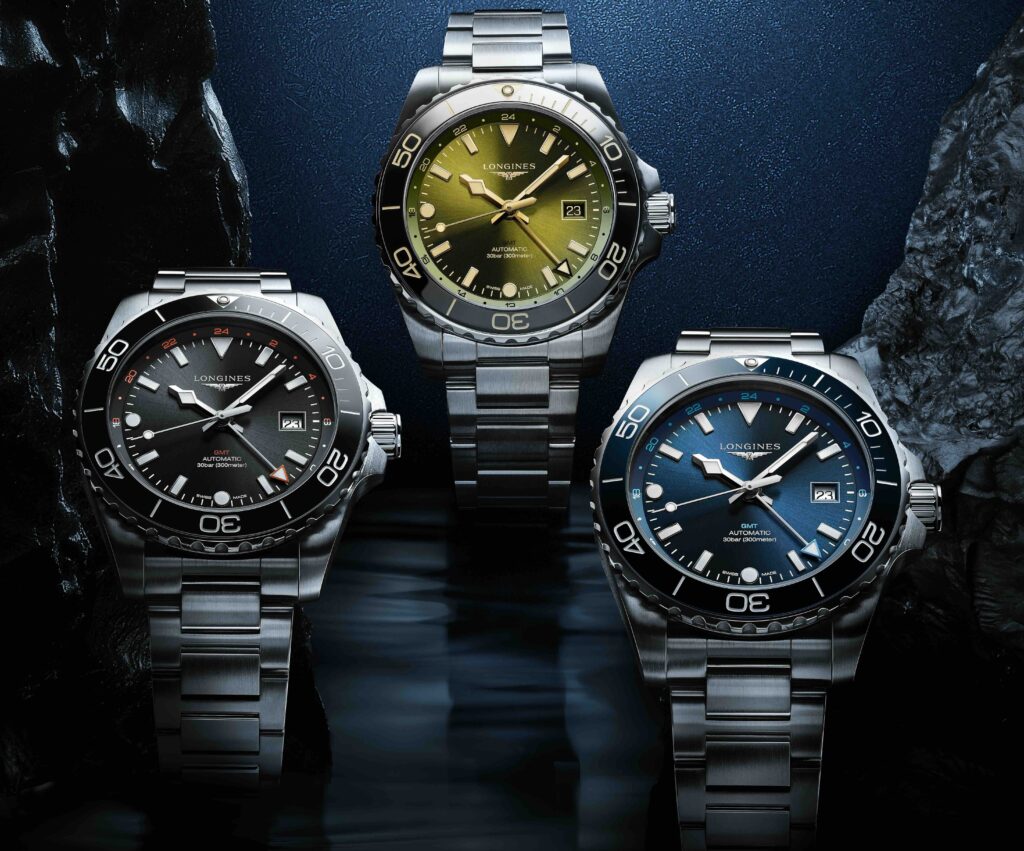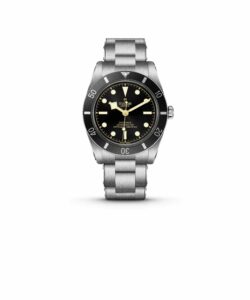Summer... Warm.... Swimming... So eminently the time to take a look at the water resistance of your diving watch.
Text: Gerben Bijpost
Have you just jumped into the cooling water, you suddenly realise you still have your precious watch on. If only that goes well. Fortunately, most watches come with an indication for water resistance. And the lowest value you generally find (and which often applies to precisely the most expensive and complicated watches) is 3 ATM / BAR. That is equivalent to a theoretical water resistance to a depth of 30 metres.
So, you may think, you can safely swim with that, right? Wrong. Theoretical waterproofing means just that. It has little to do with practice. This is because that 3 ATM was determined under controlled and static laboratory conditions, without taking into account external factors such as temperature, pressure changes and wear and tear. Hence we prefer the following rule of thumb:
3 ATM / 30 mtr: splashing water and rain are no problem, but above all don't submerge the watch in water.
5 ATM / 50 mtr: You can shower with this and possibly swimming (Take it easy in terms of movements, though), but don't go snorkelling or diving with it.
10 ATM / 100 mtr: You can safely go swimming and even snorkelling with this, but deep-sea diving is out of the question.
20 ATM / 200 mtr: a reassuring value that lets you do basically anything, including deep-sea diving. But still just short of professional diving.
30 ATM / 300 mtr and more: from this value, there is no brake on your (under)water activities. Except perhaps when you dive to the bottom of the Mariana Trench....
Decisive for the degree of water resistance are mainly the case construction, various seals and gaskets, the thickness of the sapphire crystal and the way the crown and any pushers are placed. But beware: this waterproofing is not eternal. Gaskets wear out or dry out, severe temperature differences cause materials to shrink and expand and the crown may bump into something... just a few things that can cause the waterproofness of your watch to fall short of what the inscription on it promises. It is therefore important to have your watch checked regularly.
Besides waterproofness, there are of course more aspects that determine the suitability of your watch for use in wet environments. A rubber or steel strap is obviously preferable to a leather strap. It is nice when your watch has crown protection, which prevents accidental bumping into something resulting in leakage.
The presence of a helium valve can also be useful, but only when the watch actually goes down significantly - it prevents accumulated helium gas, whose molecules are so small that they can penetrate the watch despite seals, from damaging the watch through expansion. These are some of the features found on many brands. Some watch brands-the German Sinn is a good example of this-go several steps further.
For example, they prevent condensation on the glass by filling the watch with argon gas, which keeps the internal pressure constant even during extreme temperature variations. Even better is the Hydro Oil Filling, where the movement, dial and hands are placed in a crystal-clear bath of liquid, which has the same refractive index as the sapphire glass. This allows you to read the watch perfectly even underwater from any angle, something that is normally impossible due to reflections.
An additional advantage is that this technique also prevents condensation and makes the watch extremely pressure-resistant, allowing even greater depths. The fact is that this oil-filling is only possible with a quartz watch; after all, the balance of a mechanical watch would not be able to function due to the heavier resistance of oil. Another nice invention by Sinn: a copper sulphate capsule to detect moisture and condensation in the watch. If moisture enters, the colour of the capsule changes from light to dark blue, letting the wearer know immediately that maintenance is needed.
Finally, the watch case. As you may know, there is no such thing as stainless steel. No matter how high quality, steel oxidises sooner or later. But the noble steel used for watches (usually 316L or 904L) is very highly stainless. If you want to minimise the risk of oxidation, rinse your watch well after every dive in salt water. Instead of steel, you can of course choose other case materials - ceramic, plastic, bronze, gold, etc. - each with their own pros and cons.
And then there is that special type of steel Sinn likes to work with, developed by ThyssenKrupp for the outer hulls of the world's most modern non-nuclear submarines. Much stronger still than the aforementioned 316L steel and reportedly even resistant to permanent (!) contact with salty seawater.
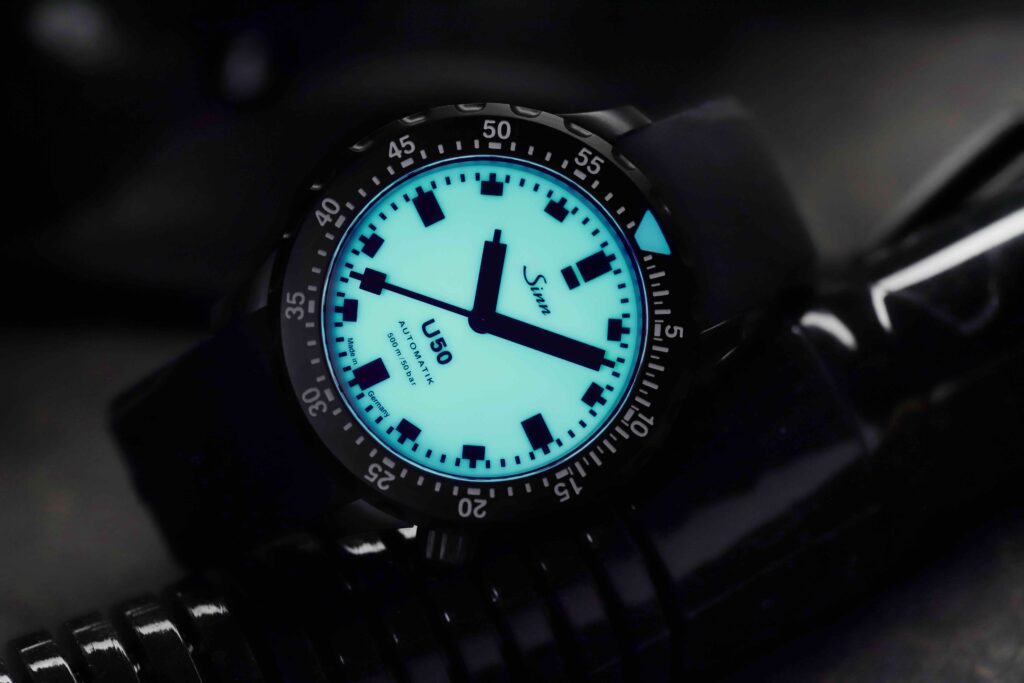 Divehologe 1:
Divehologe 1:
Sinn U50 Hydro
A certified diving watch, waterproof to 500 BAR / 5000 metres. Made of seawater-resistant German submarine steel, hardened and scratch-resistant. The case is filled with oil (HYDRO technology), making it perfectly legible from every angle even underwater. Equipped with Swiss quartz movement whose battery has an extremely long life. From €2440 (also available with automatic movement, without oil-filling €2540). www.sinn.de
Divehologe 2:
Bell & Ross BR03-92 Diver Black & Green Bronze
The BR 03-92 is water resistant to 300 metres and made of bronze. So then you know one thing for sure: that golden sheen will disappear and instead you will get a unique patina, whose colour is the result of circumstances. It will pair beautifully with the green dial anyway. Available in a limited edition of 999 pieces and featuring automatic movement with 54-hour power reserve. www.bellross.com
Diveologist 3:
Panerai Submersible QuarantaQuattro Luna Rossa Ti-Ceramitech
Waterproof up to 50 BAR / 500 metres. No worries about oxidation because this 44 mm watch is made of Ti-Ceramitech, a titanium alloy that has undergone a ceramisation process by electrolytic plasma oxidation. Result: the material is 44% lighter than steel, has a fracture toughness 10 times that of normal ceramic. Features automatic movement with 3-day power reserve.
www.panerai.com and www.schaapcitroen.nl
Divehologe 4:
Montblanc Iced Sea 0 Oxygen Deep 4810
Waterproof to 481 BAR / 4810 metres. Why this crazy number? This is how deep the top of the Montblanc comes when you place it upside down in the sea. The 43mm case is made of titanium and features crown protection. The caseback is decorated with a 3D engraving of the view divers have when diving under ice. This special effect is created by a process of laser-generated oxidation that structures the metal with both matt and glossy finishes. www.montblanc.com
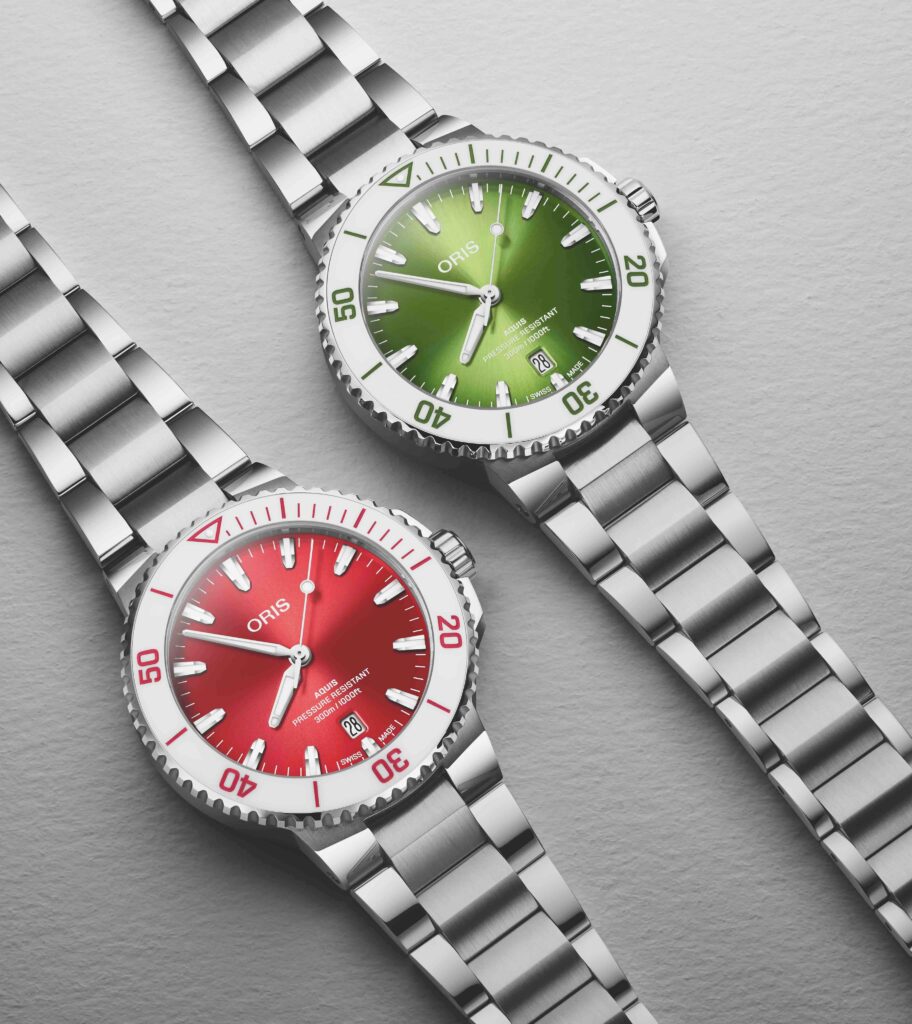
Divehologe 5:
Oris Aquis Date
A stainless steel 41.5 mm case that is water resistant to 30 BAR / 300 metres, featuring a unidirectional rotating bezel with ceramic inlay. How summery do you want it? In terms of dial colour, these divers by Oris are inspired by deliciously juicy watermelons. The case back is transparent and offers a view of an automatic movement with 41 hours of power reserve. www.oris.ch
Divehologe 6:
Longines Hydroconquest GMT
Just like the 41mm models launched in 2023, these new Hydroconquest GMTs with a case diameter of 43mm feature an exclusive Longines movement with extra 24-hour time zone and there is a choice of colours and materials. This green variant is our favourite. Water resistant to 30 BAR / 300 metres, with a unidirectional rotating ceramic bezel, screw-down crown and screw-down base. www.longines.com and www.schaapcitroen.nl
Divehologe 7:
Tudor Black Bay 54
In 1954, Tudor's first diving watch reference 7922 was released. The new Black Bay 54 pays homage to this model. With historic case dimensions of 37 mm in stainless steel, water resistant to 20 BAR / 200 metres, and a one-way rotating bezel of 60 minutes without sub-dials. Inside, Manufacture Calibre MT5400 ticks, COSC-certified with a silicone balance spring and 70-hour power reserve.
www.tudorwatch.com and www.schaapcitroen.nl
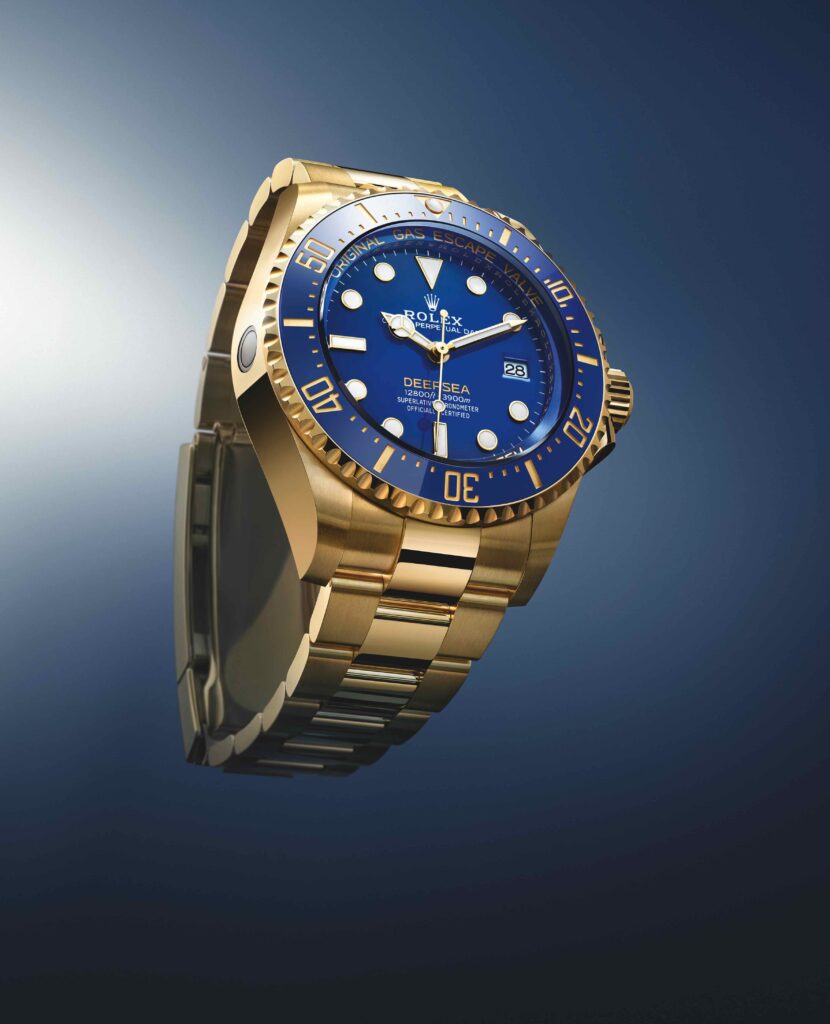
Divehologe 8:
Rolex Oyster Deepsea
The trend is for watches to become smaller and more modest? Not in this case. The Rolex Oyster Deepsea is an impressive 44 mm statement that has nothing to do with modesty. Waterproof to a depth of no less than 390 BAR / 3900 metres. The blue lacquered dial features brightly glowing Chromoalight and behind it ticks the chronometer-certified Calibre 3235, a reliable automatic with 70 hours of power reserve. You don't have to worry about oxidation: this eye-catcher consists of no less than 320 grams of solid 18-carat gold and a touch of titanium.
www.rolex.com and www.schaapcitroen.nl
Divehologe 9:
Zenith Defy Extreme Diver
Although inspired by a long line of DEFY divers from 1969 onwards, this DEFY Extreme Diver is above all a modern diver. Its angular 42.5 mm case is made of titanium, with a good weight-to-strength ratio, but also highly resistant to corrosion by salt seawater. It is equipped with a helium valve and around the dodecagonal bezel is a unidirectional rotating bezel with grooved edges for better grip. Water resistant to 60 BAR / 600 metres, which happens to be 1969 feet - symbolic in this case. Equipped with automatic movement with 60-hour power reserve. www.zenith-watches.com and www.schaapcitroen.nl



